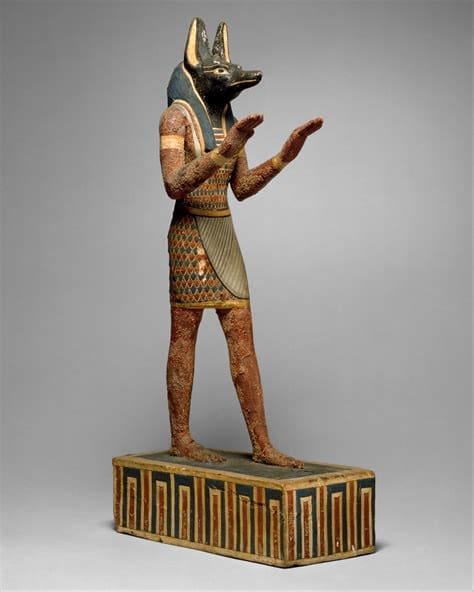Unveiling the Mysteries of Therianthropy
The Evolution of Therianthropy
Explore the rich history and cultural significance of therianthropy, from ancient myths to modern-day communities.
The Legacy of Therianthropy
Therianthropy Through the Ages
A chronological journey through the key moments in the history of therianthropy.
3000 BCE
Ancient Shamanic Practices
Early evidence of therianthropic beliefs found in cave paintings and shamanic rituals, depicting humans transforming into animals.
500 BCE
Greek Mythology
Stories of lycanthropy, such as the legend of King Lycaon, emerge in Greek mythology, illustrating early examples of human-animal transformation.
1000 CE
Medieval Europe
The fear of werewolves spreads across Europe, leading to witch hunts and trials, reflecting societal anxieties about the supernatural.
1800s
Romantic Literature
Therianthropy becomes a popular theme in Romantic literature, with authors exploring the duality of human nature through werewolf tales.
1980s
Modern Therian Communities
The rise of the internet fosters the formation of online therian communities, providing a space for individuals to share experiences and support each other.
2000s
Cultural Recognition
Therianthropy gains wider recognition in popular culture, with representations in movies, books, and media bringing awareness to the therian identity.
Overview
What follows is an overview document on the history of therians and therianthropy, including a discussion on therianthropic identities and therian types (theriotypes).
The History of Therians and Therianthropy
Introduction
Therians, short for therianthropes, are individuals who identify spiritually or psychologically with non-human animals. This identification can manifest in various ways, from feeling a deep connection with a specific animal to experiencing shifts in behavior or mindset that align with their theriotype, the specific animal they identify with. Therianthropy, the broader phenomenon encompassing these experiences, has a rich history and a diverse community that spans cultures and time periods.


Early History and Mythology
Ancient Cultures
1. Greek Mythology: The term “therianthropy” originates from the Greek words “therion” (beast) and “anthropos” (human). Greek myths are replete with tales of humans transforming into animals, such as the story of Lycaon, who was turned into a wolf by Zeus.
2. Egyptian Mythology: The Egyptians worshiped deities with both human and animal characteristics, like Anubis (a man with a jackal head) and Bastet (a woman with a lioness or domestic cat head).
3. Native American Traditions: Many Native American tribes have stories and rituals involving shape-shifting or animal spirits, where humans take on the traits or forms of animals to gain their strength and wisdom.
Shamanism and Totemism
In various indigenous cultures, shamans and spiritual leaders often identify with animals and claim the ability to transform into their totem animals. This belief in animal spirits and transformation is a precursor to modern therianthropy.
Modern Therianthropy
20th Century and the Rise of Subcultures
1. Mid-20th Century: The concept of therianthropy began to take a more defined shape within the countercultural and New Age movements. People started exploring and expressing their spiritual connections with animals more openly.
2. 1980s and 1990s: The advent of the internet played a crucial role in bringing together individuals who identified as therians. Early online forums and communities provided a space for people to share their experiences and support each other. Notable early sites include “Alt.Horror.Werewolves” (AHWW), a Usenet group where many modern therian concepts were discussed and developed.
Terminology and Identity
1. Theriotype: This term refers to the specific animal that a therian identifies with. Theriotypes can be any animal, from common species like wolves and cats to more exotic or mythical creatures.
2. Shifts: Therians often describe experiencing shifts, where they feel more like their theriotype. These can be mental shifts (changes in mindset), phantom shifts (feeling non-physical parts like tails or claws), or dream shifts (dreaming as their theriotype).


Terminology and Identity
1. Theriotype: This term refers to the specific animal that a therian identifies with. Theriotypes can be any animal, from common species like wolves and cats to more exotic or mythical creatures.
2. Shifts: Therians often describe experiencing shifts, where they feel more like their theriotype. These can be mental shifts (changes in mindset), phantom shifts (feeling non-physical parts like tails or claws), or dream shifts (dreaming as their theriotype).
Community and Culture
1. Therianthropy vs. Otherkin: While there is overlap between the therian and otherkin communities (people who identify as non-human entities, including mythological beings), therians specifically identify with earthly animals.
2. Gatherings and Conventions: Over the years, therians have organized meetups and conventions, similar to other subcultural gatherings, where they can connect in person, share experiences, and engage in activities that affirm their identities.
Psychological and Sociological Perspectives
Research and Understanding
1. Academic Studies: There has been limited but growing academic interest in therianthropy. Studies often focus on the psychological aspects, exploring why individuals identify as non-human animals and how it impacts their lives.
2. Identity and Belonging: For many therians, identifying with an animal provides a sense of belonging and purpose. It can be a way to cope with the challenges of human life by drawing strength from their theriotype.
Challenges and Misconceptions
1. Stigma: Therians often face misunderstanding and stigma from the broader society, which can view their identities as odd or delusional. This can lead to a reluctance to share their experiences openly.
2. Mental Health: There is a critical distinction between therianthropy as a spiritual or psychological identity and mental health issues. While some may worry that identifying as a therian indicates a mental disorder, for most therians, it is a positive and enriching aspect of their identity.

Conclusion
Therianthropy is a complex and multifaceted phenomenon that has roots in ancient cultures and mythology but has found a new expression in the modern world. Through online communities and personal exploration, therians continue to define and celebrate their unique identities. As understanding and acceptance grow, the therian community will likely continue to thrive and evolve.
What Our Members Say
Joining The Therian Society has been a transformative experience for me. The sense of belonging and understanding here is unparalleled.
Alex M.
The discussions and advice I’ve received from this community have helped me embrace my therianthropy with confidence.
Jordan P.
I never knew there were so many like-minded individuals out there. The friendships I’ve made here are invaluable.
Sam R.
